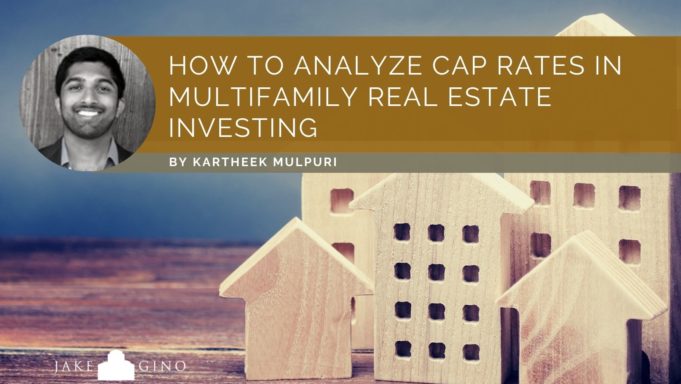
How To Analyze Cap Rates in Multifamily Real Estate Investing
By Kartheek Mulpuri
Whenever I speak with potential limited partners with a basic level of understanding about commercial real estate, “cap rate” will inevitably come up in the discussion.
“Cap rate” or capitalization rate is a metric that measures the net operating income a property generates divided by the purchase price. If you invert this metric, then you have the purchase price divided by the net operating income. This is essentially the same thing as an enterprise value-to-EBITDA (Earnings Before Interest, Taxes, Depreciation, and Amortization) multiple (EV/EBITDA) that is used to value companies in both the public and private markets (the caveat being that net operating income does factor into property taxes). With this context, it is understandable why both folks relatively new to real estate and those more experienced place value on “cap rate.” It is because this is a metric they use in the public markets when deciding which stocks to buy, especially when they are value investors.
As with many public or private companies, however, EV/EBITDA is not very relevant or totally irrelevant. Many technology companies, for example, are unprofitable and project to be unprofitable for years to come because they are focused on growth. In this space, the valuation focus is on current and future revenue (ie enterprise value-to-revenue). Why? The thinking is that one day these companies will be profitable but grabbing market share in a vast competitive market is more important. Amazon is a case study for this line of thinking.
Similarly, in the multifamily space, while cap rate can be helpful for comparing stabilized properties that are performing at or close to their full potential, it is less relevant when comparing the type of value add properties most of us pursue, especially in today’s market environment. To illustrate why, it can help to have an example.
Also watch this video on ‘How To Analyze Cap Rates in Multifamily Investing’:
Let’s say a broker is marketing a 50 unit deal at $5 million (or $100K per door). Let’s say the cap rate in the market for a property like this is 6% and the property is currently generating $200K in operating income. After looking through the numbers we see that there are easy opportunities to take this figure up substantially over time by increasing revenues and cutting down on expenses. Cap rate would dictate that the property should be valued at $3.3 million based on today’s performance. If I were to submit this offer to the broker at 33% below the asking price, it is a near certainty that my offer won’t go anywhere. Even worse, it’s possible the broker won’t take me seriously going forward.
So how should I value a property like this? In the case of underperforming properties such as this one, to develop a serious offer, I will need to do a pro forma analysis to understand what I can achieve in terms of revenue and expenses over time with improved management and investments into the property. My assumptions should be reasonable and conservative. I will also have my goals in terms of what I hope to achieve in terms of returns over the life of the project. My offer will be one that marries consistency in terms of operating assumptions with my goals for the deal. It is likely that going through this process will provide me with a more reasonable valuation to move my offer forward with. My offer is not likely to be at the asking price, because it will take time for me to get this property out of the whole that it is in and stabilize it (which is why I hope to get it at a discount) but it will be more competitive than an offer that is 33% below the asking price.
To make sure my assumptions are not crazy, I would compare my rent and expense projections to other similar properties in the market. I would also look at the per unit prices that similar properties have sold at. Doing so allows me to compare apples to apples – for example, if the property I was looking at was a class B with all two bedroom units, I can compare the price per door I am offering at to the price per door other class B properties with two bedroom units have sold at.
Using cap rate as the primary valuation methodology for value add properties may have worked ten years ago when there were few buyers for multifamily assets and many more sellers looking to move on from their properties. However, in today’s market where that dynamic has been flipped, using cap rate as your primary valuation methodology for value add properties simply won’t work.
Please reach out to me at kartheek@kartheekmulpuri.com to learn more about investing in real estate.







